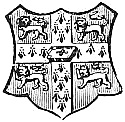E-text prepared by the Online Distributed Proofreading Team
()
from page images generously made available by
Internet Archive
(http://archive.org)
| Note: | Images of the original pages are available through Internet Archive. See http://archive.org/details/historyofepidemi02unse |

A HISTORY
OF
EPIDEMICS IN BRITAIN.
London: C. J. CLAY and SONS,
CAMBRIDGE UNIVERSITY PRESS WAREHOUSE,
AND
H. K. LEWIS,
136, GOWER STREET, W.C.

Cambridge: DEIGHTON, BELL AND CO.
Leipzig: F. A. BROCKHAUS.
New York: MACMILLAN AND CO.
A HISTORY
OF
EPIDEMICS IN BRITAIN
BY
CHARLES CREIGHTON, M.A., M.D.,
FORMERLY DEMONSTRATOR OF ANATOMY IN THE UNIVERSITY OF CAMBRIDGE.
VOLUME II.
From the Extinction of Plague to the present time.
CAMBRIDGE:
AT THE UNIVERSITY PRESS.
1894
[All rights reserved.]
Cambridge:
PRINTED BY C. J. CLAY, M.A. AND SONS,
AT THE UNIVERSITY PRESS.
PREFACE.
This volume is the continuation of ‘A History of Epidemics in Britain fromA.D. 664 to the Extinction of Plague’ (which was published three yearsago), and is the completion of the history to the present time. The twovolumes may be referred to conveniently as the first and second of a‘History of Epidemics in Britain.’ In adhering to the plan of a systematichistory instead of annals I have encountered more difficulties in thesecond volume than in the first. In the earlier period the predominantinfection was Plague, which was not only of so uniform a type as to giveno trouble, in the nosological sense, but was often so dramatic in itsoccasions and so enormous in its effects as to make a fitting historicaltheme. With its disappearance after 1666, the field is seen after a timeto be occupied by a numerous brood of fevers, anginas and otherinfections, which are not always easy to identify according to moderndefinitions, and were recorded by writers of the time, for exampleWintringham, in so dry or abstract a manner and with so little of humaninterest as to make but tedious reading in an almost obsolete phraseology.Descriptions of the fevers of those times, under the various names ofsynochus, synocha, nervous, putrid, miliary, remittent, comatose, andthe like, have been introduced into the chapter on Continued Fevers so asto show their generic as well as their differential character; but a notless important purpose of the chapter has